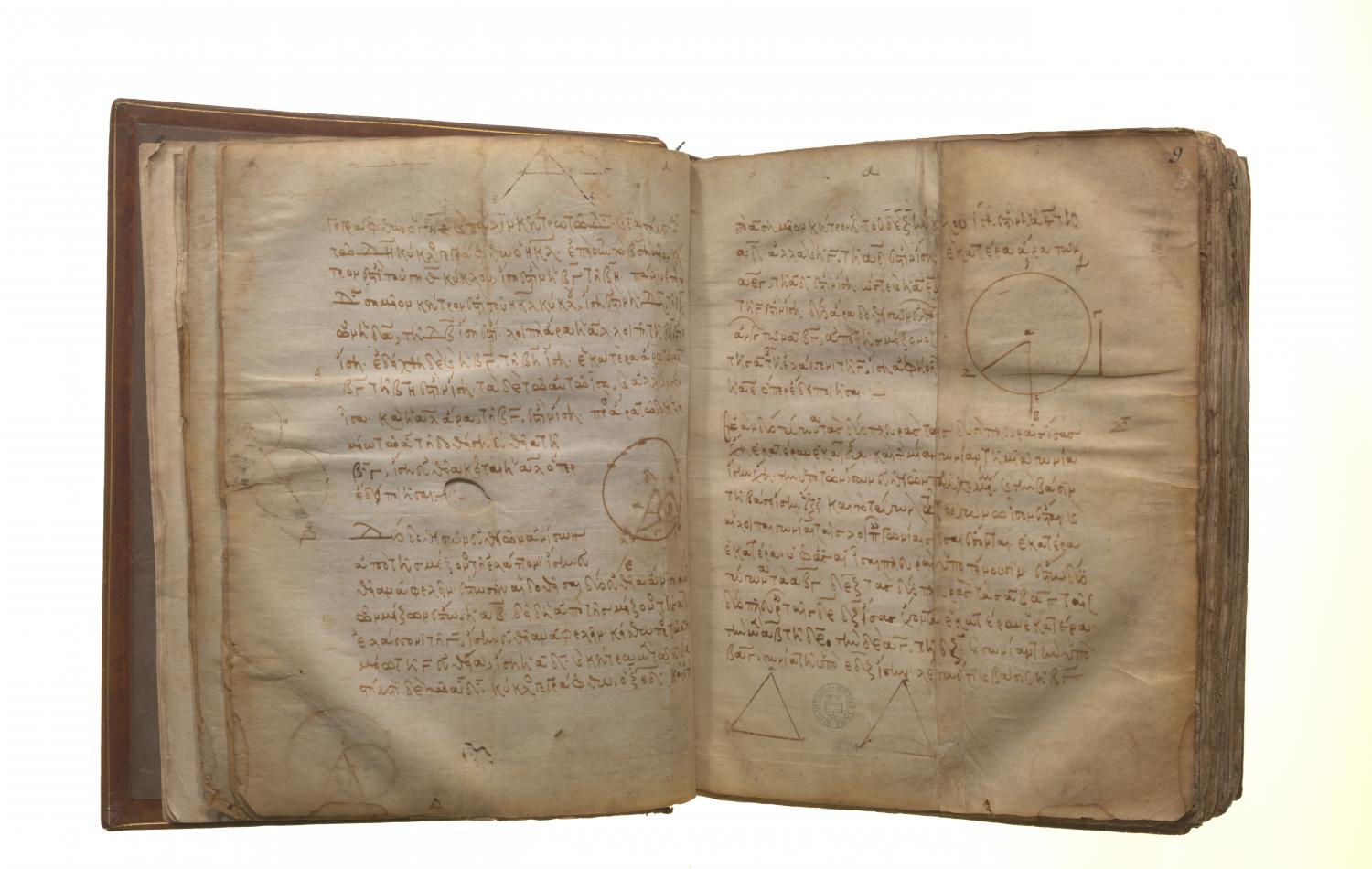Translations
Δύο δοθεισῶν εὐθειῶν ἀνίσων ἀπὸ τῆς μείζονος τῇ ἐλάσσονι ἴσην εὐθεῖαν ἀφελεῖν. Ἔστωσαν αἱ δοθεῖσαι δύο εὐθεῖαι ἄνισοι αἱ ΑΒ, Γ, ὧν μείζων ἔστω ἡ ΑΒ: δεῖ δὴ ἀπὸ τῆς μείζονος τῆς ΑΒ τῇ ἐλάσσονι τῇ Γ ἴσην εὐθεῖαν ἀφελεῖν. Κείσθω πρὸς τῷ Α σημείῳ τῇ Γ εὐθείᾳ ἴση ἡ ΑΔ: καὶ κέντρῳ μὲν τῷ Α διαστήματι δὲ τῷ ΑΔ κύκλος γεγράφθω ὁ ΔΕΖ. Καὶ ἐπεὶ τὸ Α σημεῖον κέντρον ἐστὶ τοῦ ΔΕΖ κύκλου, ἴση ἐστὶν ἡ ΑΕ τῇ ΑΔ: ἀλλὰ καὶ ἡ Γ τῇ ΑΔ ἐστιν ἴση. ἑκατέρα ἄρα τῶν ΑΕ, Γ τῇ ΑΔ ἐστιν ἴση: ὥστε καὶ ἡ ΑΕ τῇ Γ ἐστιν ἴση. Δύο ἄρα δοθεισῶν εὐθειῶν ἀνίσων τῶν ΑΒ, Γ ἀπὸ τῆς μείζονος τῆς ΑΒ τῇ ἐλάσσονι τῇ Γ ἴση ἀφῄρηται ἡ ΑΕ: ὅπερ ἔδει ποιῆσαι.
Given two unequal straight lines, to cut off from the greater a straight line equal to the less. Let AB, C be the-two given unequal straight lines, and let AB be the greater of them. Thus it is required to cut off from AB the greater a straight line equal to C the less. At the point A let AD be placed equal to the straight line C; [I. 2] and with centre A and distance AD let the circle DEF be described. [Post. 3] Now, since the point A is the centre of the circle DEF, AE is equal to AD. [Def. 15] But C is also equal to AD. Therefore each of the straight lines AE, C is equal to AD; so that AE is also equal to C. [C.N. 1] Therefore, given the two straight lines AB, C, from AB the greater AE has been cut off equal to C the less.
